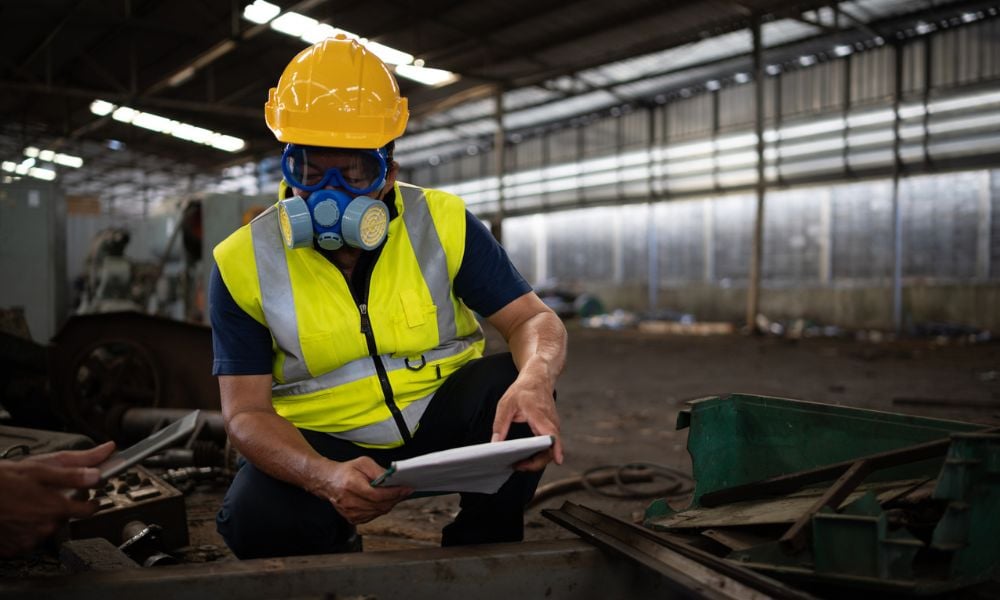'There are people who still fall ill, and they should have the confidence to know that they will be taken care of'

In looking to improve its ability to address workplace-related diseases, Ontario plans to create a new system for tracking diseases and long-term illnesses contracted on the job.
The provincial government will be launching Canada’s first occupational exposure registry, according to a recent report. And one government official believes it will speed up diagnosis of workplace-related diseases and improve worker compensation.
"We know that there are people who still fall ill because of their job, and they should have the confidence to know that they and their loved ones will be taken care of, and this isn't happening enough," says David Piccini, the province’s labour minister, in a CBC report. Ford appointed Piccini as minister of labour last month, replacing Monte McNaughton.
This comes after Ontario launched a review of its occupational illness system in 2022.
"Ontario has one of the strongest health and safety records in the country, but we need to make sure our system works for everyone," said McNaughton in a statement.
While it has been easy for some workers to prove that their diseases were a result of their work, others have to take years just to prove that their job caused their illness.
For example, the McIntyre Powder was used as a method to prevent miners from developing silicosis at many mines in northern Ontario between 1943 and 1979. The province’s records reveal 27,500 miners were exposed to aluminum dust. The dust was also used in mines in Quebec, British Columbia, Manitoba, Saskatchewan and the Northwest Territories as well as the United States and around the world.
A WSIB-commissioned study completed in 2020 by Dr. Paul Demers found a statistically significant increased risk of Parkinson’s disease in miners exposed to the powder. Earlier this year, Ontario made amendments to a regulation under the Workplace Safety and Insurance Act to formally recognize Parkinson’s as an occupational disease linked to McIntyre Powder exposure.
Late in 2022, the Ontario government finally gave a long-awaited apology to the workers who were exposed to McIntyre Powder for over three decades, and to their families.
"While we know an apology will not bring your loved ones back, it will not ease the pain and sadness so many of you have faced. This tragedy should not have happened to you," McNaughton said back then in the Legislature, with a group of about 30 people, including former miners exposed to McIntyre Powder and their families in attendance.
‘Workers have been exposed for years’
Janice Martell, founder of the McIntyre Powder Project, welcomed Ontario’s recent move to create a provincial registry of occupational exposures to a wider range of toxins.
"We're not going to break the cycle of occupational disease unless we look at what workers are exposed to and what their health issues are," she said in the CBC report.
"Workers have been exposed to stuff for years, stuff that we know is toxic," Martell said. "When we go and see a doctor, the doctor will ask about your family medical history, they'll ask you about lifestyle factors: 'Do you drink? Do you smoke?' How often have we been asked at our doctor's: 'What do you do for a living? What are you exposed to in your workplace?'"
In July, the International Association of Fire Fighters (IAFF) called on governments to invest in respiratory protection for firefighters battling wildfires.
Earlier this year, Ontario announced that firefighters suffering from pancreatic and thyroid cancer will be able to have their Workplace Safety and Insurance Board (WSIB) claims processed quicker, after it expanded the coverage.
A case study on the Ontario Asbestos Workers Registry from 1986 to 2012 previously found that that the registry is “a useful but challenging source of information for the surveillance of asbestos exposure in Ontario”.
“The registry could benefit from well-defined surveillance objectives, a clear exposure definition, systematic enforcement, regular data analyses, and results dissemination,” said Anna J. Koné Pefoyo, et. al, in the report titled Exploring the Usefulness of Occupational Exposure Registries for Surveillance.




